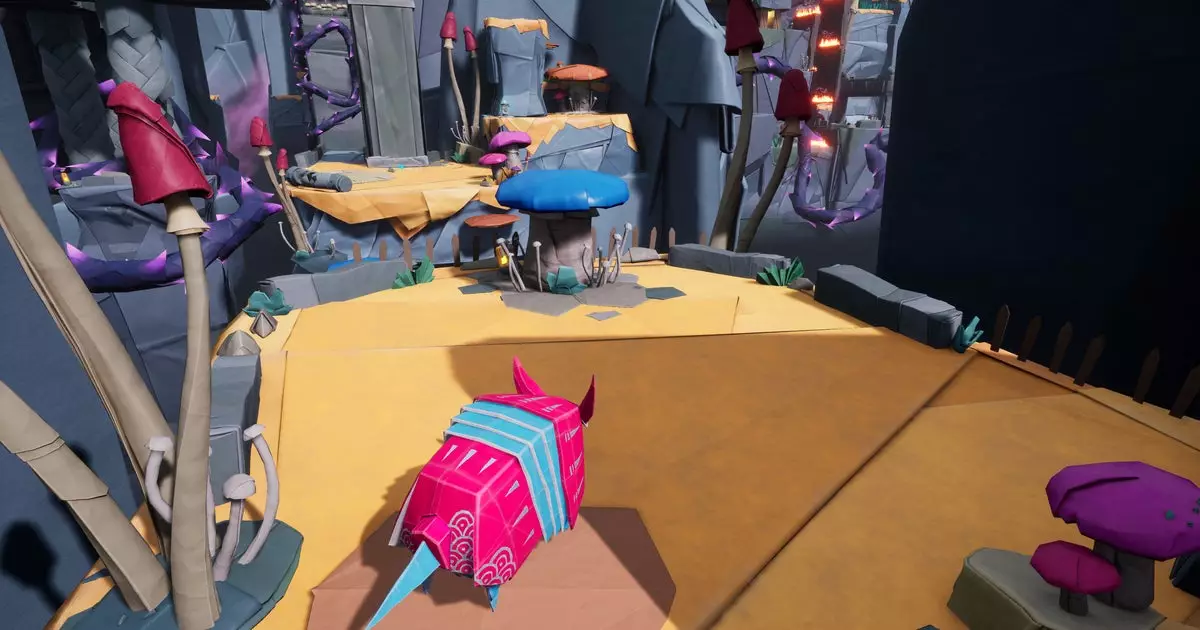In the vast universe of video games, few narratives weave as compelling a critique of our digital reality as Hirogami. This action platformer, housed in a world where paper and the ethereal qualities of origami clash with the pixelated turmoil of digital life, presents an intriguing paradox. It begs the question: what does it mean for a digital game to champion the beauty of paper art while simultaneously embodying the very medium it appears to critique? This complexity is amplified when one considers the backdrop of a “blight,” metaphorically resonating with the encroaching digital landscape that threatens traditional forms of art.
The main character, Hiro—a paper protagonist endowed with the capacity to morph into various quirky forms—represents not just the splendor of origami but also highlights the fragility of physical mediums in the face of digital convenience. As players navigate through intricate levels, each encounter unveils a myriad of gameplay mechanics emblematic of both creativity and challenge. The vibrant world juxtaposes the tactile nature of paper against the limitless realms of digital landscapes, creating an ironic twist that leaves players pondering the fate of traditional art forms in an increasingly digital age.
Through its narrative, Hirogami intricately interlaces threads of whimsy and poignancy. Players are thrust into a saga that emphasizes the delicate balance of a world tainted by the blight—an allegory that resonates all too well with today’s cultural context, where the permanence of print and traditional media is increasingly threatened by the ephemeral nature of online content. Each transformation Hiro undergoes—from a bouncy frog to a stealthy block-pulling ape—serves to remind players of the imaginative potential that lies within all artistic endeavors, regardless of their medium.
However, there exists an undercurrent of irony in these transformations, particularly when one considers how Hiro’s journey reflects the discussions around the relevance of printed media in an age besotted with digital. Could it be that the game is subtly mocking those who declare that “print is dead”? While Hiro engages in battling digital creatures, the narrative may also serve as a rallying call for the preservation of print art—urging players to embrace the fragility and uniqueness of traditional forms.
Technically speaking, Hirogami enters a saturated genre with its blend of platforming mechanics and visual flair. While the art direction is decidedly lush, its reliance on the well-trodden theme of a paper-inspired world may come off as tired to some players familiar with similar adventures. The unique abilities Hiro possesses, such as unfolding into a paper airplane or rolling as an origami armadillo, while charming, echo experiences found in previous games.
The absence of mini-games could be a notable shortcoming in the gameplay mechanics. Imagining an interactive folding sequence for each transformation might have introduced a deeper appreciation for the art of origami, creating an opportunity for players to engage not just with the storyline but with the craft it seeks to uphold. Highlighting the intricate folds and techniques would have allowed Hirogami to elevate its homage to traditional art further—transforming play into a rich educational experience, rather than just a digital escapade.
Hirogami is due for release in 2025, and anticipation is already bubbling among gamers and artists alike. The game represents an interesting crossroad, where the dichotomy of analogy and digitalization begs a closer examination of our relationship with various forms of art. What may emerge is a challenging dialogue about preservation versus progress, a tension that has plagued artists and critics alike.
In a future where video games increasingly serve as cultural artifacts, Hirogami stands at the forefront, urging us to engage with the complexities of art in our digital landscape. Will it be a mere nostalgic nod to a by-gone era of print, or will it ignite a renewed appreciation for the fragility of traditional mediums? Only time will tell, but for now, Hirogami begins its journey as a fragile yet powerful commentary on the interplay between the worlds of paper and pixels.

